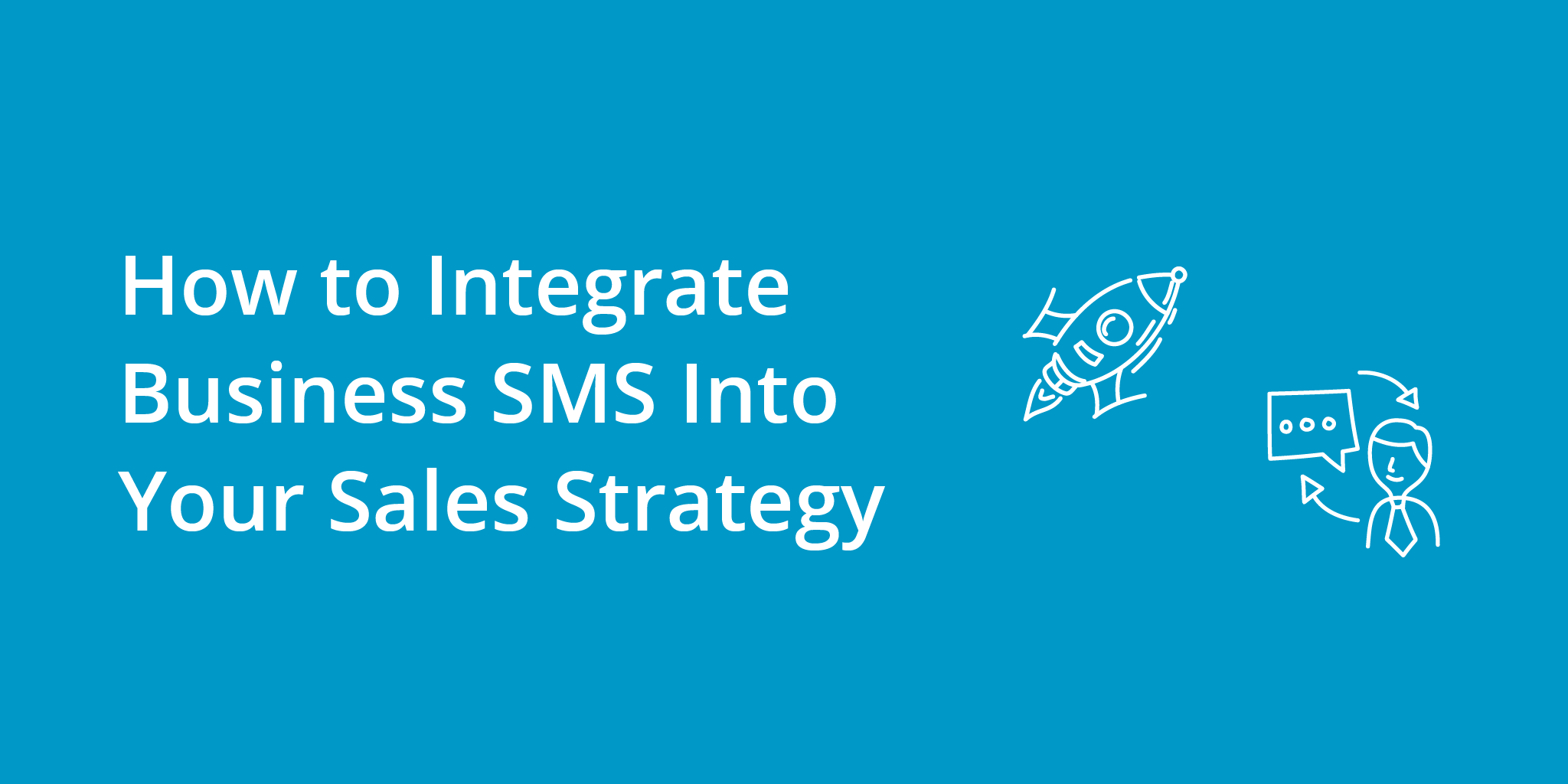When it comes to sales communications, SMS is still a relatively new channel that may not seem viable for an effective sales strategy.
And, with 75% of millennials actively doing their best to actively avoid phone calls, it’s proof we as sales professionals need to get on board and start communicating how our customers and prospects prefer.
Furthermore, since SMS use isn’t often the preferred communication method in a sales rep’s sales process, it’s less noisy than traditional phone and email methods.
SMS open rates are also much higher, compared to email.
In fact, a whopping 98% of text messages are opened. Considering this, it makes sense to get an SMS outreach strategy in place and increase the chance of your sales messaging getting read.
This post will provide tips and best practices for getting text messages into your sales process, thus adding another highly effective engagement channel to your arsenal.
A Definition of SMS for Sales
SMS for sales is a modern and effective communication channel for connecting with potential customers, closing deals and managing business interactions.
By incorporating SMS into your sales process, you can communicate quickly and effectively with high-value prospects, increasing your open and overall response rates.
Whether or not you have considered adding SMS to your sales process, now is the perfect time to start thinking about it, as there are many benefits to using SMS campaigns as part of your day-to-day sales strategy.

SMS Benefit #1: Automated SMS for multi-channel engagement
One of the best things about SMS is that you can use it in conjunction with other sales and marketing channels to create a multi-channel engagement strategy.
For example, you could use a lead capture form on your website that not only collects the lead’s information but also opts them into receiving SMS messages from you.
Once you have their SMS details, you can add them to an automated follow-up sequence for low-maintenance lead nurturing.
Given that some customers prefer text messaging over the phone or email, you may even get a higher response rate over more traditional channels.
SMS Benefit #2: Read notifications and speed of delivery
Knowing when a prospect has read the email you sent them is hugely beneficial when planning your follow-up strategy.
The problem sales people experience today is that many company email servers now have systems that prevent salespeople from getting notifications that their emails have been read.
We’re following up in the dark.
Rather than relying on third-party email deliverability notifications strewn with inaccuracies, you can be assured that most phone manufacturers notify the sender when text messages are read.
This allows you to make a follow-up call a few days later, knowing for certain whether your prospect has received and read the information you sent them via text message.
Using SMS as part of your sales follow-up strategy can prevent the awkward yet all too familiar sales objection response of “No [name], I didn’t get a chance to read your email. Can you call me back in {x} days?”.
While these benefits are a great plus for SMS outreach, there are a couple of negatives to consider.
SMS Disadvantage #1: People don’t like receiving text messages from salespeople
While it’s relatively common now that prospects know salespeople can find mobile numbers for almost anyone on the internet, it doesn’t mean they approve of it.
Many still see it as a significant invasion of privacy, and for good reason.
So, be prepared to get responses filled with all sorts of rejections (and even profanities!) when sending sales SMS messages. Just try not to take it personally – I’m afraid it comes with the territory.
SMS Disadvantage #2: Limited message space
The ability to articulate a sales message with concise messaging is advantageous, particularly regarding email messaging. But, those who might not be familiar with copywriting might find this point more challenging to manage.
With SMS messaging you only have 160 characters to use per message. Therefore, it is essential to keep your messaging short yet at the same time more conversational than other forms of communication.
Consider the lack of text space an excellent opportunity to practice your copy writing skills.
While SMS will never replace a good cold call, it is still a fantastic communication channel every sales professional should utilize. However, SMS messages should be used with a well-thought-out sales strategy for the best effect.
Consider some sales SMS best practices below.
Sales SMS Best Practices & Suggestions
Ensure your prospects can opt in and opt out (just like email).
Similarly to email outreach, sending unsolicited SMS messaging to contacts that haven’t opted in voluntarily can impact business credibility and expose you to heavy penalties if the proper regulations are not abided by.
For this reason, ensure that your prospects have opted in to receive text messages from you before sending SMS messages. Furthermore, ensure you have an opt-out option for prospects that no longer wish to receive SMS sales and marketing content.
Make use of automation.
Using automation tools as part of your SMS text message strategy can help make your SMS campaigns much more efficient.
Sending individual SMS messages to every contact on your prospect list can get extremely tedious. Not to mention the long-term risk on those thumbs!
When sending automated text messages, segment your audience so that the messaging is appropriate to your target. This will ensure that your messaging will be relevant enough that the prospects will be more likely to respond.
Also, set the time zone appropriately for the location of your prospects or customers. Nothing will irritate your dream clients more than receiving a midnight text message that happens to wake them up.
They’ll probably never do business with you again.
Turn on two-way text messages.
Have two-way messaging enabled on your SMS platform so your prospects can message you back.
Even though the messages are automated, you still want them to feel personalized so prospects can engage in a dialogue with you if they wish.

Personalize your SMS messages.
Personalization has been proven to improve read and response rates, so the more personalized you can make your SMS messaging campaign, the better.
Types of personalization could be as simple as using a prospect’s name, to more complex personalization such as segmenting your data by persona and crafting more tailored messaging.
Remember a call to action (CTA).
Consider why you are reaching out in the first place, and ensure there’s a clear call to action that you want the prospect to take on receipt of your SMS.
The best call to action is time sensitive, creating a sense of urgency for your prospects to act upon.
Consider incentives to get your prospect to act.
Sending SMS incentives can be a great way to boost sales when you need them most.
For example, you could provide a limited-time discount offer and a link to your website to get the prospect to act quickly. This can be particularly useful if the link directs them to a landing page to get them into a sales funnel, all from their mobile device.
When sending incentive campaigns, it’s in your best interest to make the CTA as frictionless as possible. Text messaging campaigns can go a long way towards helping reduce that friction.
Provide value.
Finally, ensure that your text messages provide value with each engagement.
Whether an offer, an incentive or something educational, you want to be thoughtful in your approach to ensure that you aren’t just pushing product on the prospect.
More Sales SMS Use Cases
Sales outreach is one just of many use cases for which text messages are helpful. There are plenty of other practical use cases that can enable you to communicate with your customers and prospects more quickly and efficiently.
Follow Up
Follow-up with sales leads seems like a lost art these days.
Yet, follow-up has to be one of the most valuable strategies I’ve employed over the years that contributed to my sales success.
Utilizing SMS as part of your follow-up process goes a long way to alleviating all the sales pressure that often comes with conducting a follow-up phone call.
Because of the casual nature of text messages, your prospect may be more inclined to open up and have a more honest conversation with you.
SMS Meeting Reminders
There’s nothing worse than working so hard to get the first meeting with a prospect, only for them not to attend the Zoom call.
SMS appointment reminders are great because the prospect will likely receive them even if they are out of the office. If this is the case, they will be able to message you immediately explaining that they can’t make the meeting.
From previous experience, meeting no-shows tend to increase when a prospect needs email access to get the reminder.
Post-Sale Communications
How you communicate with a customer after the deal is closed is just as crucial as pre-sale engagement. Using SMS to connect with your customer after implementing your product is a great way to continue the engagement.
Of course, they don’t have to respond, but it’s nice to let them know they can should there be any challenges they might be facing with your product or service.
SMS Marketing & Loyalty Programs
Finally, SMS is a fantastic way to keep your loyal customers up to date and reward them.
You can send out offers regularly or send informational SMS marketing content to inform them of company updates. Either way, the more you communicate regularly with your customer base, the more likely they will stick around.
Conclusion
Now is the perfect time to start if you have yet to consider SMS as part of your outreach strategy. Customers are more connected to their phones than ever, and from a sales perspective, SMS is a grossly underutilized and underestimated form of business communication.
Author Bio
Matt Jennings is Sales Professional with over seven years of experience across outbound, full cycle account and business development management, sales management, and sales operations. His sales experience has had him working Document, SaaS and Financial Services vertical markets and booking some of the world’s largest companies exceeding multiple billion dollars in turnover. In addition, he has experience selling across APAC, EU, UK and US regions. Matt now heads up Sales Operations at Sales Science and writes sales focused educational content. You can read more at matjen.com.



